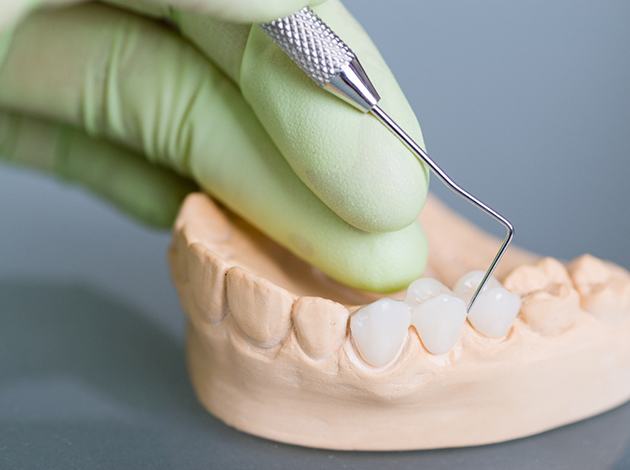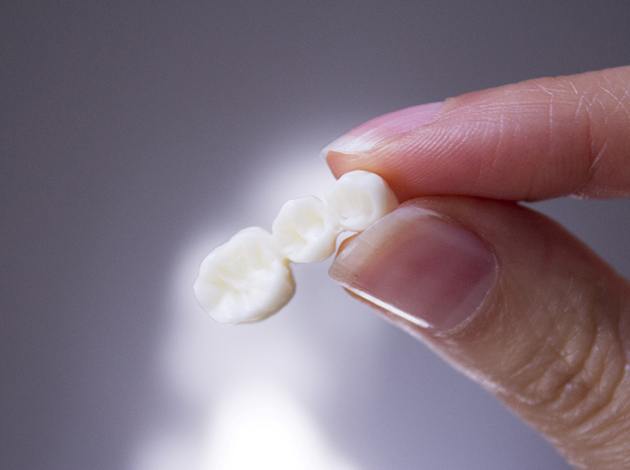Dental Bridges – Newark, CA
Bridging the Gaps Between Teeth
Just the loss of a single tooth will make life tricky. While the affected area may be (relatively) small, it’ll still harm your looks and oral health. So, it’s clear that losing several adjacent teeth is even worse. The bright side is that you can solve this matter with dental bridges in Newark. With these devices, our office can fill the gaps in your smile. Learn more about them by reading below or book a consultation soon.
What is a Dental Bridge?

A dental bridge is a fixed restoration for your grin. In general, it consists of dental materials fused to the sides of a pontic (i.e., an artificial tooth). The full appliance can replace up to four missing teeth at once.
Given their traits, dental bridges best suit people who’ve lost a few adjacent teeth. Such patients can have their entire smiles restored with just one treatment. Getting a bridge lacks strict requirements otherwise. So long as you’re in good health, you’ll likely qualify for one.
The Types of Dental Bridges

You must consult our dentists before you get a dental bridge. Only then can we confirm whether the restoration suits your smile’s needs. If it does, we’ll draft a custom treatment plan for you.
After the consultation, we’ll review our findings and suggest one of two types of dental bridges to you. These potential choices are:
Traditional Dental Bridge
The traditional dental bridge (per its name) is pretty well-known. Typically, it’s made up of dental crowns fused to the sides of a pontic. That means the device relies on nearby natural teeth for support.
Compared to an implant bridge, a traditional one costs less. The materials it uses tend to be inexpensive. Still, a dentist must alter the supporting teeth (“abutments”) to place it. This process removes some of your enamel for good.
Implant Bridge
An implant bridge doesn’t work like a regular one. Rather than dental crowns, it uses dental implants – small titanium posts – to secure itself. These restorations slowly fuse with the jaw over time. By doing so, the final bridge will remain stable and secure. It won’t loosen or fall like other prosthetic teeth.
Of course, an implant bridge won’t alter your natural teeth. Dentists don’t need to “prep” any abutments before placing it. That said, this device does cost more than the standard option.
The Benefits of Getting a Dental Bridge

Should you get a dental bridge, you’ll enjoy several notable perks. These include the following:
- Pretty & Lifelike Results – Today’s dental bridges use tooth-colored porcelain, so they blend seamlessly with your smile. Your friends and family likely won’t even notice you have one.
- Straighter Teeth – A dental bridge keeps your other teeth from tilting and falling due to smile gaps. In other words, it helps you avoid a more crooked and gapped grin.
- Easier Eating – By filling your smile gaps, a dental bridge helps you chew tough foods. That means it also lets you enjoy a more varied diet.
- Lasting Effects – The average dental bridge lasts 5-15 years. Meanwhile, a well-maintained one can reach a lifespan of 20+ years.
Should your adjacent teeth go missing, a dental bridge could help. Give thought to treatment and book a consultation soon!

